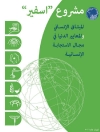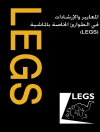Based on the empirical analysis of the effectiveness of four provincial centres for the diffusion of the Clean Development Mechanism (CDM), a market mechanism for emission reductions, Miriam Schröder scrutinizes the strengths and weaknesses of hybrid actors’ performance on the local Chinese carbon market.
Innehållsförteckning
Introduction PART I: THE CHALLENGE Climate Change as a New Challenge to Environmental Governance in China PART II: THE PERFORMANCE OF CDM CENTERS AS SEMI-PUBLIC AGENCIES The Need for Capacity Development in the Early CDM Market The Role of Agencies in Diffusing the CDM Case Study on the Performance of Four CDM Centres Lessons Learned about the Role of Diffusion Catalysts PART III: IMPLICATIONS OF HYBRID ACTORS FOR ENVIRONMENTAL GOVERNANCE Blurring of Public and Private Boundaries Conclusion: How to Make Hybrid Actors Accountable for Public Good Provision
Om författaren
MIRIAM SCHRÖDER is a Research Fellow at Potsdam University, Germany. Her research focuses on Chinese climate politics, the Clean Development Mechanism, and renewable energy deployment. She has published on these topics in a range of journals, including the
Cambridge Review of International Affairs,
Applied Energy and the
Journal of Environment and Development.












